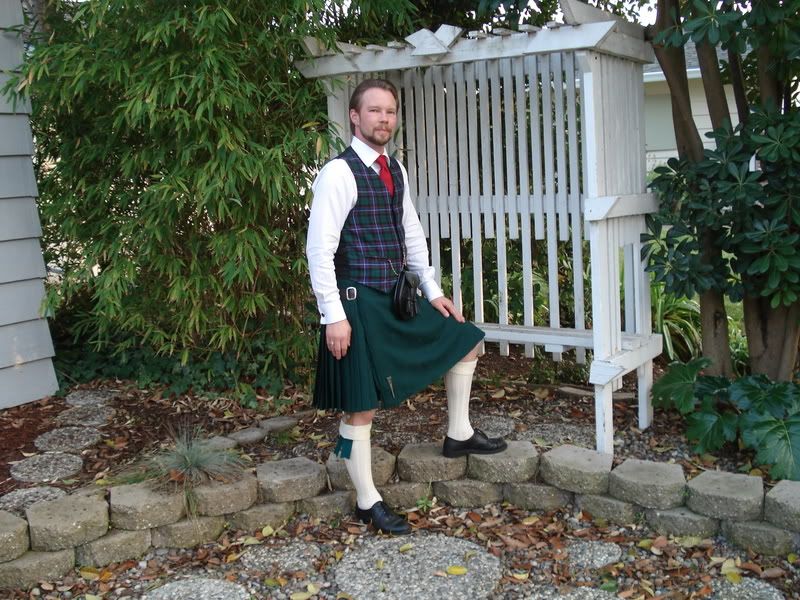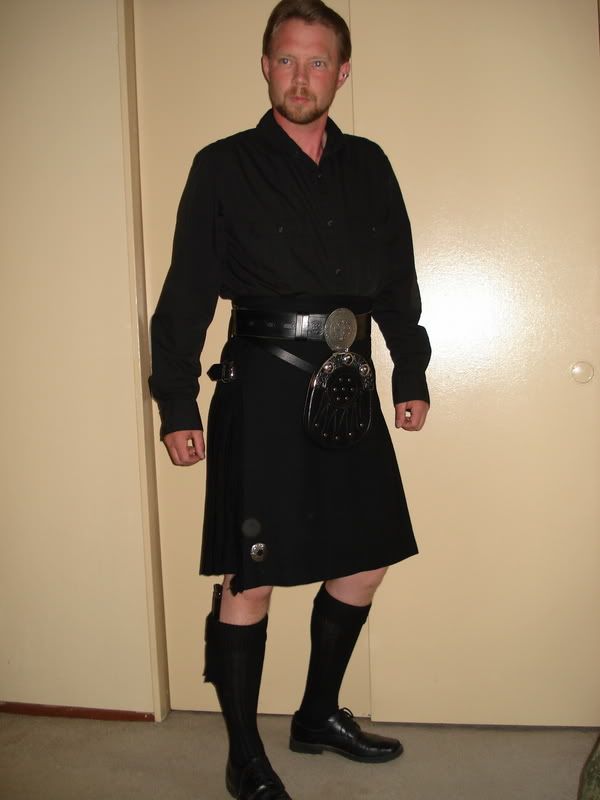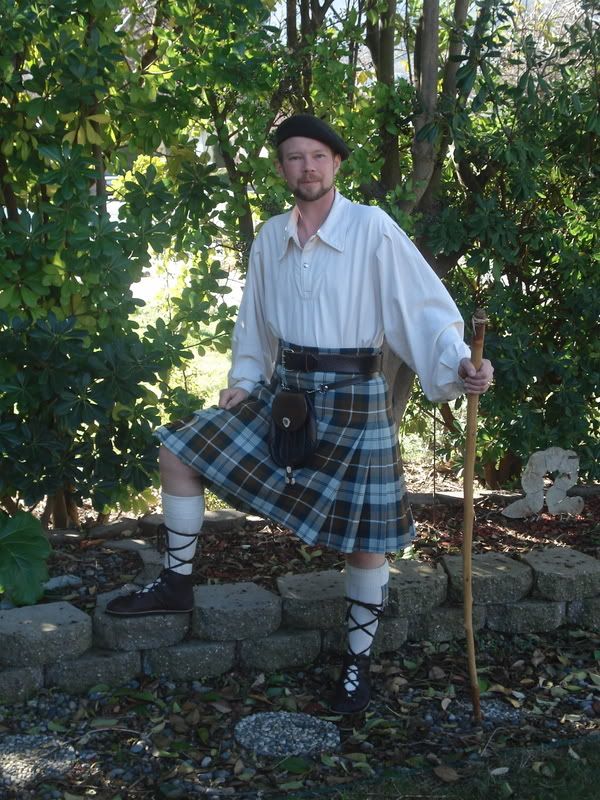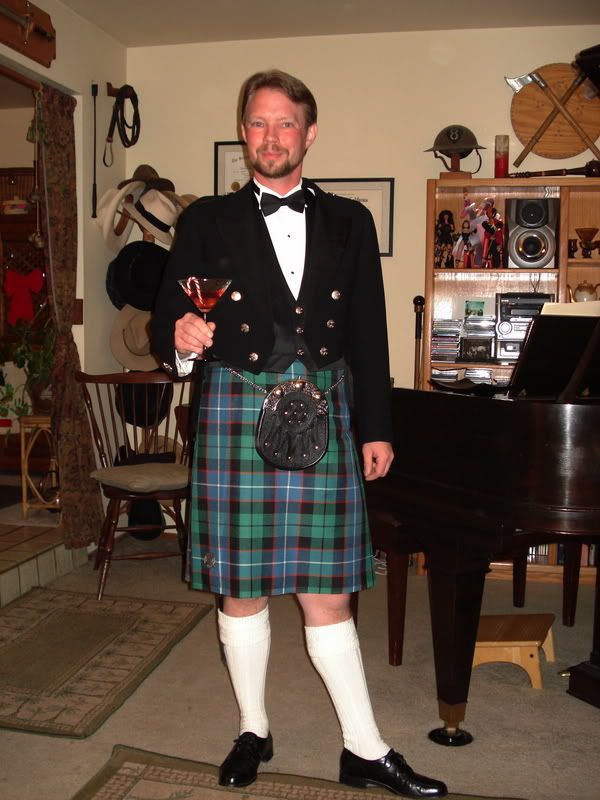Doctor Jones
Familiar Face
- Messages
- 96
- Location
- Orange County California
In discussing Highland Dress it helps to use consistent terminology; otherwise discussions sometimes go nowhere due to two people simply using the same words differently, or using different terms for the same thing.
For me the terms "historical" and "traditional" have quite distinct meanings, when discussing things such as Highland Dress and folk music.
A traditional thing is a currently existing, currently used modern thing which goes back to unknown origins and has an unbroken lineage of evolution from that unknown origin to the present day.
So the various elements of Highland Dress, the distinctive shoes, the kilt, the sporran, the "Scotch bonnet", all go back to unknown origins. Yes one can speculate, but actual evidence, no. These things have all been in continuous use from unknowable early times until today, and during that time have gone through a number of evolutionary changes which have resulted in the forms we see today. It's why the term "modern traditional Highland Dress" is not an oxymoron, but rather a redundancy. To be traditional is to be modern.
Now what if we go back along that unbroken evolutionary chain and pluck out a sporran style, a jacket style, a shoe style from a specific point in the past. To wear that thing today would be to wear a historical thing, not a traditional thing. This is because the tradition continued to evolve after the period in question.
To put it visually here is the chart of a traditional thing:
Unknown Origin 1 2 3 4 5 6 7 8 9 The Present Day
the number 1 through 9 representing examples of the thing observable in old paintings, photographs, or verbal descriptions, 1 being the earliest evidence, 9 being the most recent form before it evolved into the currently existing form.
To wear a vintage or reproduction example of the thing's form at stage 3, or stage 8, would be to wear a historical form rather than the modern, traditional, form.
Ditto if a thing has not survived to modern times, but went out of usage at some point in the past. It is, today, a historical thing and not a traditional thing.
It's why it looks alien, and odd, to a modern Highland Dress wearer who is of the tradition to see somebody wearing a mix of modern traditional things and historical things. They might wonder "what is that person's intention? To wear Highland Dress or to wear a historical costume?"
Time for pretty pictures!
A fellow c1860 showing the sorts of things that typify Victorian Highland Dress: a wide variety of jacket, sporran, bonnet, and shoe styles, and the wearing of long hair sporrans with all modes.



For me the terms "historical" and "traditional" have quite distinct meanings, when discussing things such as Highland Dress and folk music.
A traditional thing is a currently existing, currently used modern thing which goes back to unknown origins and has an unbroken lineage of evolution from that unknown origin to the present day.
So the various elements of Highland Dress, the distinctive shoes, the kilt, the sporran, the "Scotch bonnet", all go back to unknown origins. Yes one can speculate, but actual evidence, no. These things have all been in continuous use from unknowable early times until today, and during that time have gone through a number of evolutionary changes which have resulted in the forms we see today. It's why the term "modern traditional Highland Dress" is not an oxymoron, but rather a redundancy. To be traditional is to be modern.
Now what if we go back along that unbroken evolutionary chain and pluck out a sporran style, a jacket style, a shoe style from a specific point in the past. To wear that thing today would be to wear a historical thing, not a traditional thing. This is because the tradition continued to evolve after the period in question.
To put it visually here is the chart of a traditional thing:
Unknown Origin 1 2 3 4 5 6 7 8 9 The Present Day
the number 1 through 9 representing examples of the thing observable in old paintings, photographs, or verbal descriptions, 1 being the earliest evidence, 9 being the most recent form before it evolved into the currently existing form.
To wear a vintage or reproduction example of the thing's form at stage 3, or stage 8, would be to wear a historical form rather than the modern, traditional, form.
Ditto if a thing has not survived to modern times, but went out of usage at some point in the past. It is, today, a historical thing and not a traditional thing.
It's why it looks alien, and odd, to a modern Highland Dress wearer who is of the tradition to see somebody wearing a mix of modern traditional things and historical things. They might wonder "what is that person's intention? To wear Highland Dress or to wear a historical costume?"
Time for pretty pictures!
A fellow c1860 showing the sorts of things that typify Victorian Highland Dress: a wide variety of jacket, sporran, bonnet, and shoe styles, and the wearing of long hair sporrans with all modes.



Last edited:
















